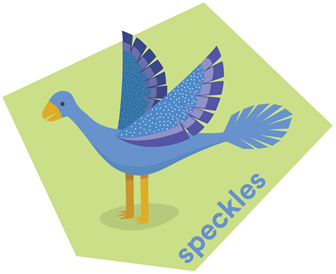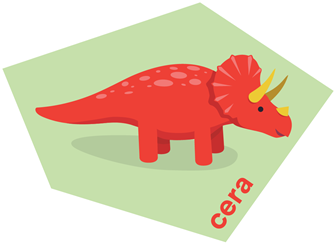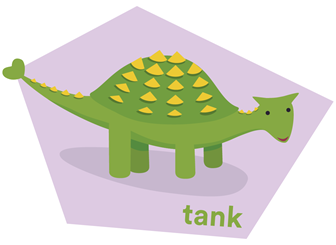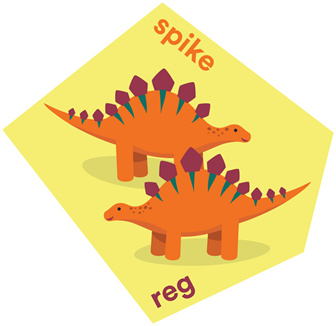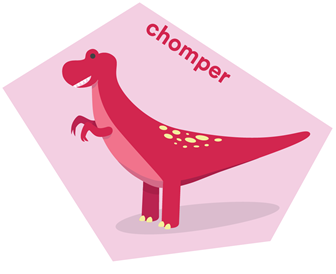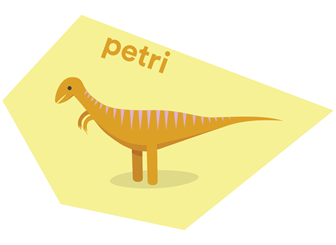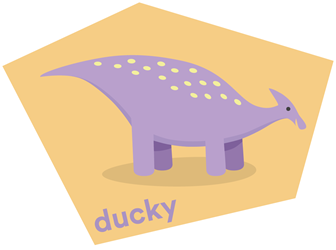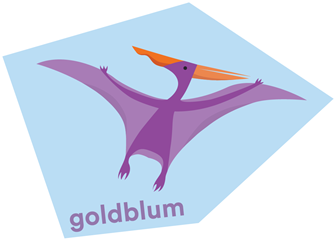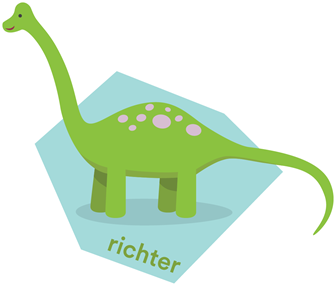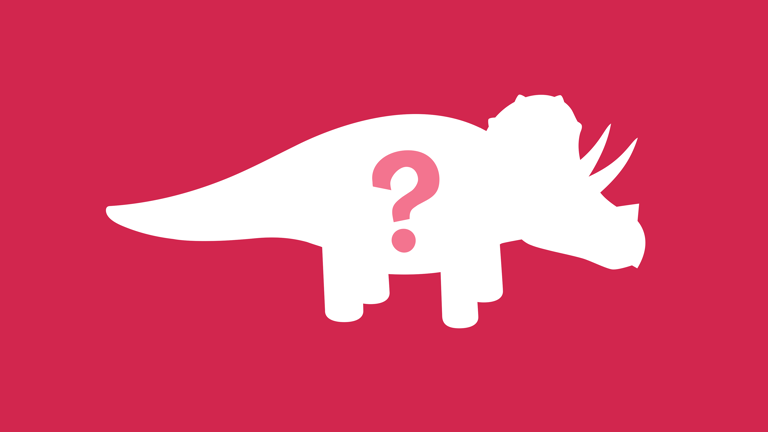
10 Tiny Dinosaurs
The rescue mission is now complete and we've found all the tiny dinosaurs. Thanks for all your help! Look out for the 100 Tiny Dinosaurs coming to Melbourne Museum soon.
If you entered our 10 Tiny Dinosaurs online competition, the prize draw will be conducted on Monday 16 November 2020 and winners will be notified by email. Full terms and conditions here
Meet the gang
Speckles
The back story: If dinosaurs entered beauty contests, then Speckles would surely take the crown. When she’s not strutting her stuff, this proud Archaeopteryx spends most of the day preening her lavender-blue plumage ensuring not a feather is out of place.
Dino facts: Archaeopteryx was an evolutionary link between non-avian dinosaurs and modern-day birds that lived approximately 150 million years ago. Its fossils show a combination of features from both groups including the bony tail and toothed jaw of a dinosaur and the wishbone seen in birds.
Cera
The back story: She knows she’s right and there isn’t anything you can say to convince her otherwise! This young, head-strong Triceratops loves nothing more than to engage in a debate with her fellow dinosaurs, unless of course it’s to sing her latest dino ditty.
Dino facts: Triceratops was a ceratopsian dinosaur, a horned and frilled dinosaur, that first appeared during the late Cretaceous period, approximately 68 million years ago. It is likely that these horns and frills were used in combat against other Triceratops, and as a visual display for mating, communication and recognition.
Tank
The back story: Just as his name suggests, Tank is the super heavy, armoured dinosaur that acts now and thinks later. Though this sometimes gets him into trouble, he always acts in the best interest of the group ensuring that if mistakes are made, it is he, and he alone, that will wear their consequences.
Dino facts:Talarurus was an ankylosaur dinosaur, known from several fossils unearthed in Mongolia in the 1950s. Ankylosaurs were the most heavily armoured dinosaurs, and Talarurus was one of the best equipped of these with thick bony plates and short protruding spikes covering the body.
Reg and Spike
The back story: Hamish and Andy; Lano and Woodley; Kath and Kim. These stegosaurus siblings may be prehistoric, but their comedy (just like their heroes) is certainly current. Always laughing and ready to turn that frown, upside down.
Dino facts: Stegosaurus is among the most well-known of dinosaurs easily recognized by its spiked tail and the series of large triangular bony plates that run along its back. Growing to a length of about 6.5 metres, it probably used its toothless beak to feed upon a variety of plant life including mosses, cycads and ferns.
Chomper
The back story: A descendant of the royal line of Mongolian tyrannosaurids, Chomper was born to rule his fellow tiny dinosaurs. Unlike his predecessors, however, this Tarbosaurus chooses to lead through friendship rather than fear.
Dino facts: Tarbosaurus was a large carnivorous theropod dinosaur from Mongolia. Like its close North American relative, Tyrannosaurus rex, it had a very large head and powerful jaws, but was not top heavy as its huge skull was comparatively thin and light, with large air pockets.
Petri
The back story: Blink and you’ll miss him! The smallest member of the tiny dinosaurs is also the most elusive. Frightened of nearly everything (including his own shadow), this little Hypsilophodon only seems to calm down when his friend, Tank is nearby.
Dino facts: Early palaeontologists thought Hypsilophodon looked like a tree kangaroo, and for a brief period thought that it may have perched in trees. These ideas were discounted though, and it is now thought that Hypsilophodon instead lived very successfully on the ground as a small, fast sprinter.
Ducky
The back story: As the brains of the outfit, the tiny dinosaurs often depend on Ducky to make sense of the world around them-be it Lost World or World Wide Web. She may not have all the answers, but you can be sure this purple Parasaurolophus won't rest until she finds out.
Dino facts: Parasaurolophus was a hadrosaurid, part of a diverse family of Cretaceous duck-billed, dinosaurs known for their range of bizarre head adornments and unique set of teeth. Parasaurolophus evolved a ‘battery’ of teeth that served as huge files for grinding coarse plant material. These teeth were constantly replenished by new teeth growing from below.
Goldblum
The back story: Don’t let the missing teeth fool you, this cheeky Pteranodon is all smiles. Maybe it’s the powered flight. Maybe it’s the impressive crest. Whatever it is, this tiny “dinosaur” is keeping something close to his chest.
Dino facts: Pteranodon belonged to the Pterosaurs- a group of flying reptiles with skin-covered wings that existed during most of the Mesozoic period. It is believed that Pteranodon consumed mainly fish (due to the fossilized remains found in their stomachs) but how exactly they caught these fish is unclear.
Richter
The back story: It’s hard to get lost in the crowd when you have this enormous Mamenchisaurus walking by your side. Everyone's favourite Saurischian signpost is always there to lead the way but what most fail to see (from their lower vantage point) is that though he puts on a brave face, the tallest tiny dinosaur is a little homesick.
Dino facts: Mamenchisaurus was a giant sauropod with a very long neck — amongst the longest of any animal that has ever lived. Measuring up to 11 metres, the neck was almost half the overall length of the animal.
